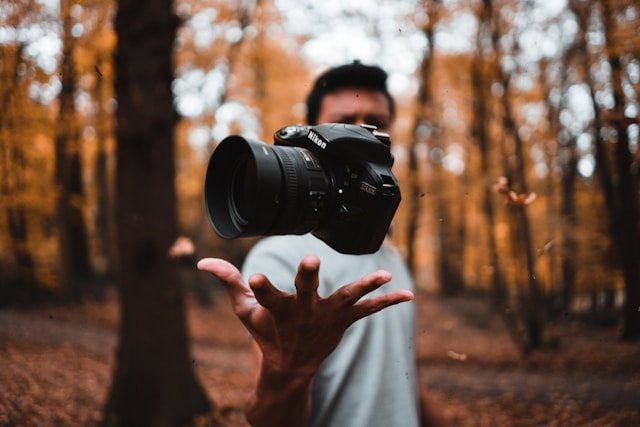Keyword: Camera Memory Cards
Photo by Samsung Memory on Unsplash
Choosing the right memory card for your camera might seem straightforward, but with the variety of options available, it’s easy to get overwhelmed. From different speeds to storage capacities, understanding the nuances of memory cards can significantly impact your photography experience. This guide will break down the essentials, helping you make an informed choice for optimal performance, reliability, and storage.
Understanding Memory Card Types
There are several types of memory cards available, but the most common ones used in cameras are SD (Secure Digital), CF (CompactFlash), and XQD/CFexpress cards. The type you choose largely depends on your camera model and the demands of your photography or videography.
- SD Cards: The most widely used and versatile, SD cards are compatible with most consumer cameras. They come in SDHC (Secure Digital High Capacity) and SDXC (Secure Digital Extended Capacity) variants. SDHC cards can hold up to 32GB, while SDXC cards start at 64GB and can go up to 2TB. They’re ideal for photographers who shoot both stills and videos, offering reliable performance at affordable prices.
- CF Cards: CompactFlash cards are bulkier and are often used in high-end DSLR cameras. Known for their durability and high storage capacities, CF cards are favored by professional photographers who shoot in RAW format or need ample space for large files.
- XQD and CFexpress Cards: The latest advancements in memory cards, XQD and CFexpress offer ultra-fast speeds suited for high-resolution video recording, burst photography, and continuous shooting. These cards are typically used in advanced mirrorless and DSLR cameras and are essential for photographers working in demanding environments (Sandisk.com).
Capacity: How Much Storage Do You Need?
When choosing the right memory card, consider how much storage space you’ll need. For most hobbyists, a 32GB or 64GB SD card should suffice for general photography. However, if you’re shooting in RAW format or 4K video, higher capacities like 128GB or 256GB are advisable. A larger capacity minimizes the need to swap cards mid-shoot and provides ample space for high-resolution files (DigitalTrends.com).
It’s also worth noting that larger cards might not always be the best choice, especially if you’re capturing priceless moments. Spreading files across multiple smaller cards, such as two 64GB cards instead of one 128GB card, can help protect against data loss if one card becomes corrupted.
Speed Ratings: Ensuring Quick Write and Read Speeds
Memory card speed is crucial for shooting high-speed images, continuous bursts, and HD or 4K video. Memory cards are generally labeled with speed classes, which indicate the minimum write speed. Here’s what to know:
- Speed Class: This is the standard rating for video performance. Classes include Class 2, Class 4, Class 6, and Class 10, with Class 10 being the fastest at a minimum of 10MB/s. Class 10 cards are suitable for HD video and most photography needs.
- UHS (Ultra High Speed) Class: For even higher speeds, UHS-I and UHS-II cards offer up to 104MB/s and 312MB/s respectively. UHS-II cards have additional pins for faster data transfer, making them ideal for professional video and burst shooting.
- V (Video Speed Class): The V-class is specifically for video recording, with ratings like V30, V60, and V90. A V60 or V90 rating ensures smooth 4K or 8K video recording without buffering issues (B&H Photo).
For photographers shooting fast-action sports or wildlife, a higher-speed card like UHS-II or V90 will provide a better experience. However, for general photography, a Class 10 or UHS-I card should be sufficient and more budget-friendly.
Durability and Reliability: Protecting Your Data
Memory cards are susceptible to data loss due to temperature fluctuations, water damage, and physical impact. Many cards are labeled as “rugged” or “extreme” and are designed to withstand harsh conditions. For outdoor photographers or those working in unpredictable environments, investing in a card with waterproof, shockproof, and temperature-resistant features can safeguard your files (SanDisk Extreme PRO).
Card Brands and Reliability
Well-known brands like SanDisk, Lexar, Kingston, and Sony consistently perform well and are trusted for quality and durability. SanDisk and Lexar offer a range of options that balance speed, durability, and affordability. They also have rigorous quality control and data recovery software options in case of corruption. Sony’s Tough line is ideal for professionals looking for maximum durability and speed but comes with a higher price tag.
Formatting and Maintenance Tips
Proper care and formatting of your memory cards can extend their lifespan. Here are some best practices:
- Format the Card in the Camera: Always format a new card in your camera rather than on a computer to avoid compatibility issues. This also resets the card structure, reducing the chance of corruption.
- Avoid Filling the Card Completely: Leaving some space on the card helps prevent performance issues and corruption.
- Use a Card Reader: When transferring files, use a dedicated card reader instead of connecting your camera directly to the computer. This is faster and reduces wear on your camera’s battery.
- Replace Cards Periodically: Flash memory wears down over time. Replacing cards every few years, especially if you’re using them frequently, can prevent unexpected data loss (Tom’s Guide).
Conclusion
Choosing the right memory card for your camera involves understanding your needs and the specific requirements of your camera model. For general photography, a reliable SD card with moderate capacity and speed should be enough. If you’re working in demanding conditions or need to capture high-speed video, opt for a UHS-II or CFexpress card with a larger capacity and higher write speeds. Remember to consider brand reliability, durability features, and proper maintenance to ensure your card performs optimally for years.
Investing in a quality memory card might seem trivial compared to other equipment, but it’s a small choice that can greatly impact your photography experience and protect your valuable work.




0 Comments